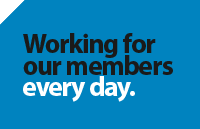 Prince Edward Island, New Brunswick, Newfoundland and Manitoba are currently the provinces seeing the best results in flattening the curve. As it stands, they are now the best positioned to move toward opening up their economies again.
Prince Edward Island, New Brunswick, Newfoundland and Manitoba are currently the provinces seeing the best results in flattening the curve. As it stands, they are now the best positioned to move toward opening up their economies again.
Prince Edward Island will begin reopening some businesses today, as well as select services and public spaces. The plan will be implemented in four phases, with a progressive lifting of public health measures on individuals, communities and organizations over three-week periods.
The New Brunswick government began loosening restrictions on April 25. This decision involved allowing people to congregate in some public spaces. If plans continue as expected, the next steps in the recovery could commence in mid-May. The second phase of the recovery plan will allow retailers that have been closed during the pandemic to reopen, along with restaurants.
Manitoba’s government has unveiled the phases of its timeline to reactivate the province’s economy. “Today is good news, and it’s good news because of you,” Premier Brian Pallister said. In the first phase, set to begin on May 4, some non-essential businesses including retail stores and restaurant patios will reopen, although with precautions in place.
But even in the provinces still working to get community spread under control, plans to reopen are in the works. Premier Scott Moe has announced a five-stage plan for re-opening of businesses across Saskatchewan, including allowing non-essential retail stores to re-open their doors to the public beginning May 19.
On May 4, Quebec retailers in all regions except the Montreal Metropolitan Community can open. And the Montreal area has been given permission to reopen a week later on May 11. Other businesses in the province, which include construction, civil engineering and manufacturing companies, will gradually reopen starting on May 11. Retailers that can open are those that have stores not located in shopping centres. Stores in shopping malls will remain closed unless they can be accessed from outside. Manufacturers will resume May 11 with initial limits on the number of employees. However, Quebec’s hardware and building supply outlets will continue to close on Sundays throughout May.
Ontario will start slowly returning to normal as daily cases of COVID-19 continue to drop, a trend that has emerged in recent days. The province has unveiled its plans for a three-stage process, which will require reassessing every two to four weeks to ensure consistent decreases in cases. Then, select workplaces and public spaces will be opened up, starting with low-risk areas.
Take heart: world-wide, some countries are easing their lockdowns
 In Belgium, DIY stores and garden centres re-opened on April 18. Long lineups formed outside the stores from early morning.
In Belgium, DIY stores and garden centres re-opened on April 18. Long lineups formed outside the stores from early morning.
Hardware and home improvement stores, garden centres, flower shops and plant nurseries were permitted to reopen in Switzerland on April 27.
In Germany, the three federal states in which DIY stores had been previously closed have now allowed them to reopen. In the country’s northeast, DIY stores opened again on April 18 and both Saxony in the east and Bavaria in the south opened on April 20.
Customers descended on hardware stores in Austria when they were allowed to open again on April 14. DIY store staff confirm increased customer volume and long lineups lasting up to 2.5 hours.




































